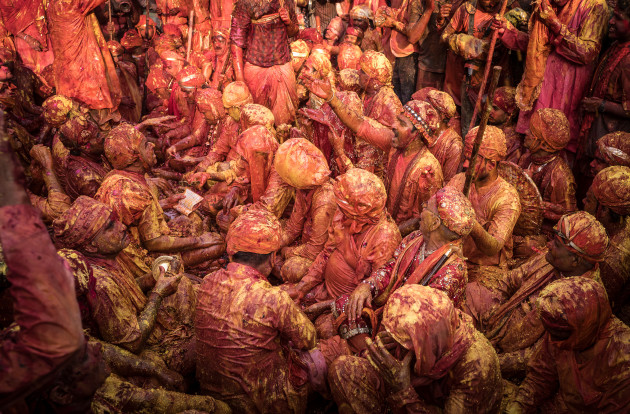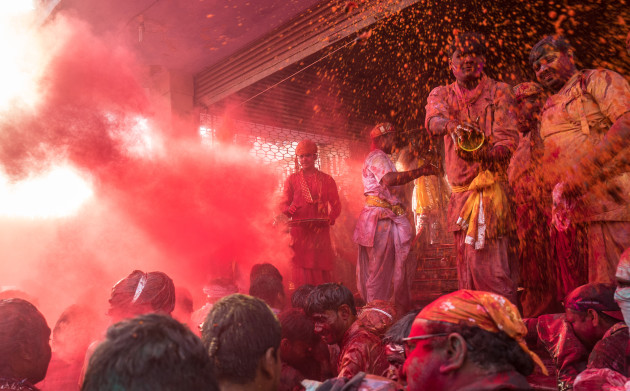Capture One vs Lightroom: Should you switch?
When it comes to image editing and cataloguing, two software packages stand out as the best options for photographers – Adobe's Lightroom and Phase One's Capture One Pro. But which one is best for you? Nick Rains spent several weeks trialling the two programs in real-world conditions to find out which one performs best in different phases of a typical workflow. Here's what he found out.
Before I start I should make it clear that I am far more familiar with Adobe Lightroom, having used it from its initial release, and have always found Capture One Pro hard to use. That's not a reflection on Capture One Pro, just my habits, but having re-examined Capture One Pro when V9 came out, I can see that it's is now far more streamlined and intuitive. It’s a bit like when I swapped from PCs to Macs and found them hard to use too! We prefer things we are familiar with.
I think that both Lightroom and Capture One Pro are currently mature and extremely capable editors, with 90% of their features overlapping and mostly equivalent. The most glaring difference is in the cost – Lightroom being A$11.99 per month (and including Adobe Photoshop!) or about AU$200 as a standalone (not including Photoshop). Capture One Pro V9 is available as a standalone for €279 (about A$420) or as a subscription for €12 (about A$18) per month.
Capture One Pro 9 is therefore double the price of Lightroom and when you look at the Adobe deal of Lightroom and Photoshop for just A$11.99 per month you have to wonder if the extra money is worth it.
Here’s my take on where the applications sit in my workflow and some of the pros and cons of each.

Import
First up, both are slow to Import, Lightroom is, in my tests at least, slightly faster to complete the Import part of the process but both took quite a while to create Previews after the image data had copied off the memory card. Since this happens in the background you can get on with editing so it’s no big deal but Capture One Pro completed the entire process faster while Lightroom was a bit quicker to get to where you can at least start editing.
One very big difference, and one that might be a deal breaker for Lightroom, is that Capture One Pro can also act as a kind of browser by using Sessions instead of the cataloguing facility. This allows you to open a folder and examine the contents without going through the Import process and is handy if you are in a hurry and just want to check that the images are OK, or quickly export for use on the web. On the flip side, if you are importing from a card, the difference in time between a full import with minimal preview size, and using Sessions is not that great – the bottleneck is more influenced by your memory cards’ read speeds than preview and cataloguing speed.
Layers
Lightroom has no layers as such, unless you combine it with Photoshop. However, overlapping the Local Adjustment Tools’ areas of effect gives a pseudo layer effect, albeit with limited brush capabilities. Lightroom’s Local Tools allow 16 different adjustments to be made, plenty, but in C1’s case, there quite a few more adjustments available including the Colour Editor for localised HSL adjustments and, interestingly, Curves which lets you apply different curves to different parts of the image, something more in the realm of Photoshop than a raw processor.
In Lightroom it's also very hard to keep track of multiple pins from different tools while Capture One Pro has a nice neat layer stack visible in a dialog box which allows layer naming, re-ordering, etc – just like Photoshop, but with a maximum of 16 layers at one time.

DNG Formats
Capture One Pro can work happily with DNG files directly generated from cameras that use this format instead of some proprietary format (Leica and Pentax mostly), but not with DNG files created from other raw formats using a DNG converter. This is because the adjustments available in Capture One Pro do not all correspond with the adjustments in Lightroom and Adobe Camera Raw.
Colour Editing and Grading
Capture One Pro has the very powerful Colour Editor whilst Lightroom only has the very useful but somewhat limited HSL tool. The Color Editor is very subtle in use and can do things effortlessly that Lightroom users would have to pass off to Photoshop. Sampling a colour range creates a virtual mask so, for example, you could sample skin tones, invert this ‘selection’ and then adjust the Hue Saturation and Brightness of the rest of the image without affecting the skin tones. You can even convert a Color Range selection into an Adjustment Layer for extra control – something even photoshop struggles with.

Sharpening
Capture One Pro has only a basic sharpening tool as such, looking a lot like Unsharp mask in photoshop but, when you combine it with the Clarity and Structure tools, you have a lot more control than at first appears. You can imagine Clarity as being for large scale local contrast, Structure for smaller details and textures, and Sharpening for ultra-fine edges. The Clarity and Structure tools are in the Exposure Tab, oddly, because to my way of thinking they are all about Focus.
Cataloguing
Capture One Pro 9 now has a fully fledged database Catalogue system much like Lightroom has had since the beginning. This indexes images no matter where they live on your hard drives and creates a database of links and the metadata adjustments using when Exporting.
Metadata searches are similar in some ways and different in others. There is no equivalent in Capture One Pro to Lightroom's very convenient and hierarchical Filter Bar, but Capture One Pro can directly search and filter on many more metadata fields, something which has annoyed me about Lightroom for quite a while. Lightroom has overall access to a similar number of metadata fields compared to Capture One Pro but only about 28 are directly searchable on the Filter Bar and the remainder only through Smart Collections. The Filter Bar might be missing from Capture One Pro but it's quite easy to make your own version using Smart Albums and nesting them as you see fit.
Multi User Catalogues: when I read that Capture One Pro Pro has a multi-user mode I got quite excited because this is the one thing that I need that Lightroom absolutely cannot do. Lightroom is a true single user application in that the Catalogue file must be local to the machine you are sitting at. Images themselves can be accessed across a network, but not the Catalogue file itself.
Capture One Pro's Catalogue file can be accessed across a network BUT, when you consider all the embedded previews, the file can get very big. This makes it problematic to open even across a gigabit network but once open it's quite responsive. The other gotcha is that whilst multiple users can indeed view the Catalogue at the same time, it must be locked as read-only. Once unlocked for editing, only one person at a time can actually open the Catalogue to make changes. It's a small step in the right direction but to the best of my knowledge there is no genuine multi-user Catalogue app out there short of enterprise-grade software such as Canto Cumulus or Extensis Portfolio which cost many thousands of dollars and are 'only' cataloguers, not raw processors.

Speed
Capture One Pro is almost twice as fast to process out files than Lightroom. Both use all available CPU cores, eight in my case, so it’s not CPU optimisation that accounts for the difference. Capture One Pro is just faster! This could be a big deal for many photographers, especially wedding photographers who get through a lot of images and every second counts.
As a comparison exporting 100 Leica DNG files as 1000-pixel-wide sRGB JPEGs for web use took 180 seconds in Capture One and 365 seconds in Lightroom.
Capture One Pro has an excellent keystone tool which was missing from Lightroom until the recent CC2015.6 release which added the excellent Transform pane.
GPS
There is no Maps equivalent in Capture One Pro – if your images have embedded GPS data you can click on a Show on Map button in the Metadata panel which, instead of swapping to a dedicated Maps module, simply opens Google Maps in a web browser window. You can’t geotag your images by dragging and dropping images onto a map however, this is something that Lightroom does extremely well – you can geotag your images by simply dragging them onto the appropriate place in the Maps module and have Lightroom determine the GPS data and the Location metadata. For travel photographers this is an incredibly useful feature.

So which is best?
Having spent some time with this latest version of Capture One Pro v9.2 I see it as a very powerful and sophisticated application with far deeper tools than are at first apparent and with a well thought out interface. In comparison, Lightroom is limited in processing scope and still suffers from a minimalist and confusing UI where some tools are unlabelled or even only visible on a mouse-over.
Capture One is also faster to process out images and, as a bonus, can process out to different ‘recipes’ concurrently which is very cool indeed. You can export full sized TIFFs and web sized Jpegs in one Export operation by ticking one or more recipes in Output tab. Lightroom can do this too, but not quite so intuitively – you have to start one Export process going, then go back to the Export dialog or Export Preset and start another one going. One or more Export processes can run in the background so apart from the pure speed that Capture One Pro offers, I’d call this a draw.
If you were coming to either application blind as it were, Capture One Pro has the steeper learning curve. Lightroom is also half the price and effectively has the full version of Photoshop included in the package – that’s hard to beat value-wise.
Lightroom also has a versatile Plug-in architecture and some of the third-party plug-ins that you can buy are incredibly useful (being able to directly upload to Facebook with watermarking and a border is but one example) and you can even write your own! This aspect of Lightroom is not to be underestimated – it make the software very configurable and there are a whole raft of plug-ins available to make you life easier.
As far as actual image quality is concerned, I call it a draw too. Both apps process differently, with different priorities but as far as sharpness and tonal smoothness is concerned I judge them quite equivalent.
In my mind, Capture One Pro is definitely the more sophisticated package of the two, but the sheer usefulness of Lightroom is hard to beat. Unfortunately it’s not really that easy to use both together but, if you wanted to, you could conceivably use Lightroom as the master catalogue and Capture One as the specialist tool for difficult situations, exporting adjusted 16-bit TIFFs to a Hot Folder to be automatically Imported into the main Lightroom catalogue.
Is Capture One Pro V9 worth the higher cost? Yes, clearly. After all, it’s a much more powerful application and you do get what you pay for. But only if you need the extreme depth of the adjustment features. Lightroom will do 90% of what you need in a production environment but Capture One does allow a much more subtle touch and has tools that have no equivalent in either Lightroom or Photoshop.
Nick Rains is one of Australia's most indemand photo educators and tutors, with more than 30 years experience as a professional photographer. See more of his work here.

